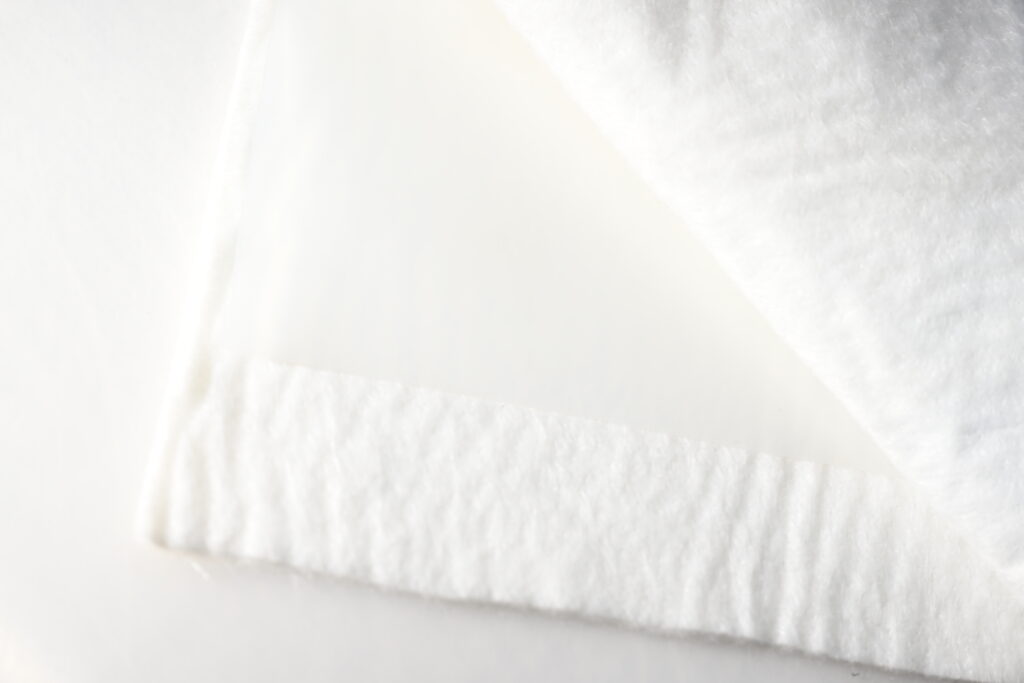Pore diameter of geotextile
The pore size of geotextiles can vary depending on application needs. Pore diameter refers to the hole diameter or opening size in the geotextile or geomembrane. The following lists the pore size ranges of several common geotextiles:
Geotextile: Geotextile usually has a larger pore size and is used for filtration and drainage. Common mesh cloths have apertures ranging from a few millimeters to several centimeters, which are used to control the passage of soil particles and maintain the permeability of water and gas.
Membrane geotextile (Geocomposite): Membrane geotextile is usually composed of a geotextile and a film layer and is used to prevent the penetration of moisture and liquids. The membrane layer may have tiny holes or perforations to balance impermeability and drainage.
Geomembrane: Geomembranes are usually made of high-density polyethylene (HDPE) or other materials. Their surfaces are usually smooth with no obvious holes or openings. The impermeability performance of geomembranes mainly depends on the sealing and thickness of the material rather than the pore size.
It should be noted that the specific geotextile pore size range is affected by product design, manufacturing process and application requirements, so the selection of geotextiles should be determined based on specific engineering needs and design standards. In addition, suppliers or manufacturers can also provide geotextile products with different pore size specifications to meet the needs of different projects.

Is geotextile plastic?
Yes, geotextiles are typically made from plastic materials. Plastic geotextiles mainly use polymer materials, such as polypropylene (PP), polyester (PET) and polyethylene (PE).
These plastic materials have excellent properties such as chemical corrosion resistance, aging resistance, wear resistance and tensile strength, and are suitable for anti-seepage, filtration, drainage and reinforcement applications in civil engineering, road construction, water conservancy engineering and environmental engineering.
Plastic geotextiles are usually made by melt spinning, needle punching, heat sealing, braiding or non-woven processes. Their structures can be divided into two main types: porous structures and non-porous structures. Geotextiles with porous structure are usually mesh-shaped, with specific pore size and hole distribution, and are used for filtration and drainage. Non-porous geotextiles are usually a continuous flat or mesh structure used for waterproofing, reinforcement and separation effects.
In general, geotextiles, as a commonly used engineering material in civil engineering, play an important role in various land engineering and geological environments due to their durability, reliability and economy.
Can geotextile be waterproof?
Geotextiles are generally not materials used to directly achieve waterproofing functions. The main functions of geotextiles are separation, filtration, reinforcement and drainage, not waterproofing.
The separation function of geotextiles refers to isolating different types of soil layers or materials to prevent their mixing and mutual penetration. It prevents finer particles from entering the coarse-grained soil layer through the holes of the geotextile.
The filtration function of geotextile is to control the passage of soil particles through pore size, allowing water to pass through the geotextile while preventing the penetration of larger particles. This allows effective drainage and prevents soil erosion.
The reinforcement function of geotextile is to improve the load-bearing capacity of the soil by increasing its strength and stability. It can be used in slope protection, roadbed reinforcement and land consolidation projects to prevent soil sliding and collapse.
Although geotextile itself is not waterproof, in some applications it can be combined with other waterproof layers or materials to achieve a certain degree of waterproofing. For example, in underground engineering or water conservancy projects, a waterproof membrane or waterproof coating can be used between the geotextile and the waterproof layer to achieve an overall waterproof effect.
Therefore, if the project requires waterproofing, materials specifically designed for waterproofing should be selected, such as waterproofing membranes, coatings or waterproofing layers, rather than relying on the geotextile itself to achieve the waterproofing effect.

